Louis Vuitton Objets Nomades’ Class of 2023 on New Pieces, Defining Design
- Oops!Something went wrong.Please try again later.
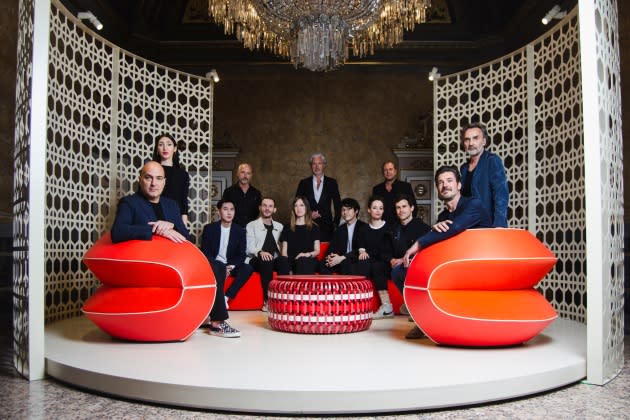
MILAN — What is design?
The perfect blend of shape and function, a tool to tell a story, pure spirituality and joy or simply something that’s never been done before: Ask a pool of talented creators in the discipline to define the term and there won’t be two similar answers.
More from WWD
It’s the ultimate question echoing throughout the bustling streets of Milan this week — where the Salone del Mobile and FuoriSalone are in full force and the whole city is invited to investigate the topic and offer their interpretations of it. The query also resonated loudly at Louis Vuitton’s annual presentation of its Objets Nomades furniture and design collection, first launched in 2012.
Presented in the frescoed halls of Palazzo Serbelloni, this year the line has been enriched with 11 new creative and functional items, realized by the likes of Atelier Oï, Raw Edges, Atelier Biagetti, Marcel Wanders, Zanellato/Bortotto and Studio Campana, who on Tuesday were asked to elaborate on their creative process, inspiration and overall vision.
“I love the investigation, the experimentation. I love to do things that haven’t been done. It’s basically what I do, it’s my passion in life… It’s not always a major invention but I really enjoy doing the undone and with the right people surrounding me, that becomes feasible,” said Dutch designer Marcel Wanders, whose wavy lamps, Capeline, delicately floated from the ceiling of one hall.
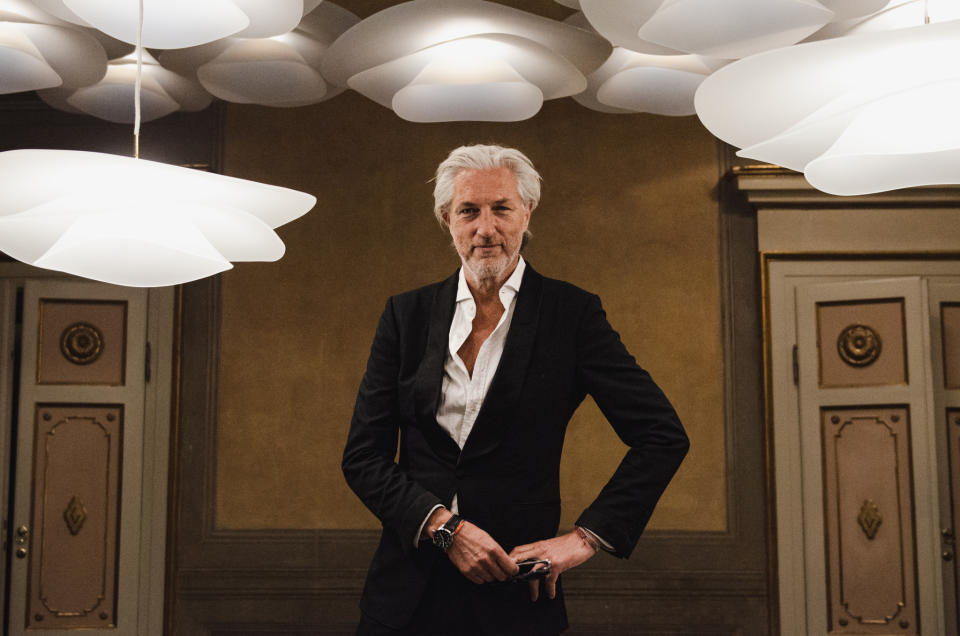
In describing the beginnings of the creative process, Wanders said that the brief from the luxury brand traced back to a long time ago, when Louis Vuitton’s initial mission was to have a collection hinged on the nomadic concept of mobility. “It was difficult to wrap my hands around it because it’s a strange concept,” recalled Wanders with a smile. “But in a way we found a way to talk about transformers, things that have movement inside them. And here we have a dancing glass piece, and we make light visible through glass. It’s a stunning piece. It’s a flower. It’s a dance.”
Wanders underscored the design conceals technical challenges in terms of having “glass sit on glass” in such an effortless way and required two years to perfect the result. Hence he praised the joint effort and Louis Vuitton’s craftsmanship behind the project, additionally formulating his personal definition of design.
“Design is not pretty things. They might be pretty things, but it’s not about doing pretty. There are a lot of pretty things that have no novelty in them, that they have no investigation or experimentation or no ideas inside, no culture. I think design is culture that speaks about itself in terms of things that haven’t been done. You can make beautiful objects without being a designer. A designer makes things that are different, just more personal and more than pretty,” he said.
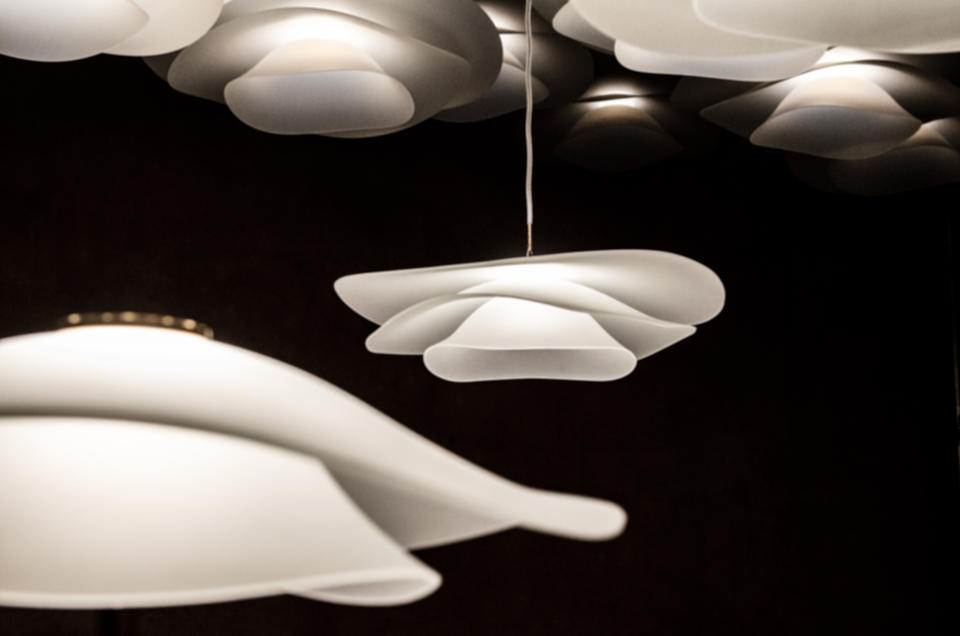
A first look at Studio Campana’s pieces might have deceived a not-so-trained eye of otherwise. The work of the Brazilian studio — which was established in 1984 by brothers Fernando and Humberto Campana — opened the whole Objets Nomades showcase with a bang via a glitzy rendition of the iconic Cocoon chair. This year, the design was rendered in the new Disco Ball version bedecked with silver mosaics, and flanked by the cloud-shaped Bomboca sofa in a striking metallic version.
“It’s a celebration, and it has become like a new object,” said Humberto Campana about the Cocoon chair, whose original shape took three years to develop. Yet there’s much more than meets the eye when it comes to the Brazilian studio’s work. The new version was intended to bring a message of “joy and visual comfort because the world today needs it,” noted Campana.
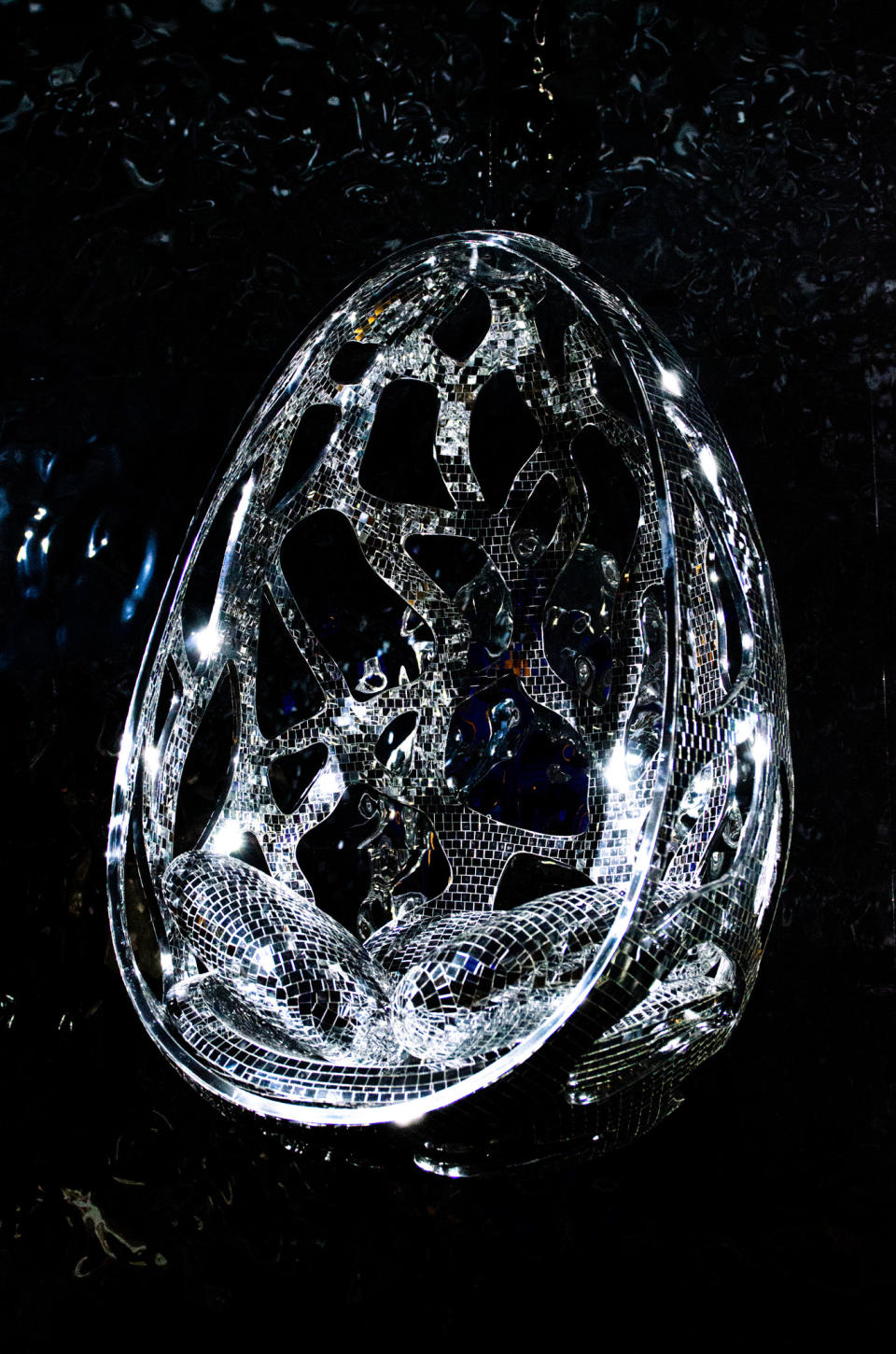
“For me design stands for dream. It’s joy and spirituality, because it ultimately belongs to people’s home and has to be something with a good energy,” he added, underscoring he found a partner in this quest in Louis Vuitton as the brand left him complete freedom.
“And that’s wonderful, because I try to give the best of me when that happens. It’s extremely important for me to start designing without any rule, also because I love to create a bridge between design and art, taking people in a surreal, dreamy world,” said Campana. “I make the poetry and [Louis Vuitton] returns to me with technique; it’s a constant dialogue.”
“When we started collaborating with Vuitton we thought we’d find ourselves in a room in Paris with a mega, extra-long brief [expecting us],” recalled Alberto Biagetti, one half of Atelier Biagetti, looking at his partner Laura Baldassari. “Instead, we found ourselves with a team asking us what was best to do. They left us complete freedom even in the choice of the category.”
To wit, the seminal design piece Atelier Biagetti developed for the brand was a sculptural table — not quite the first item that pops to mind when thinking about nomadic adventures. “It was a disruptive approach, but a table is also something bringing people together, and invites people to converse, share and exchange ideas,” noted Biagetti.
For this year’s collection, the duo opted for symbolically embodying the starting point of a journey through the new Flower Tower glass lamp or, as Baldassari put it, a “totem of light.”
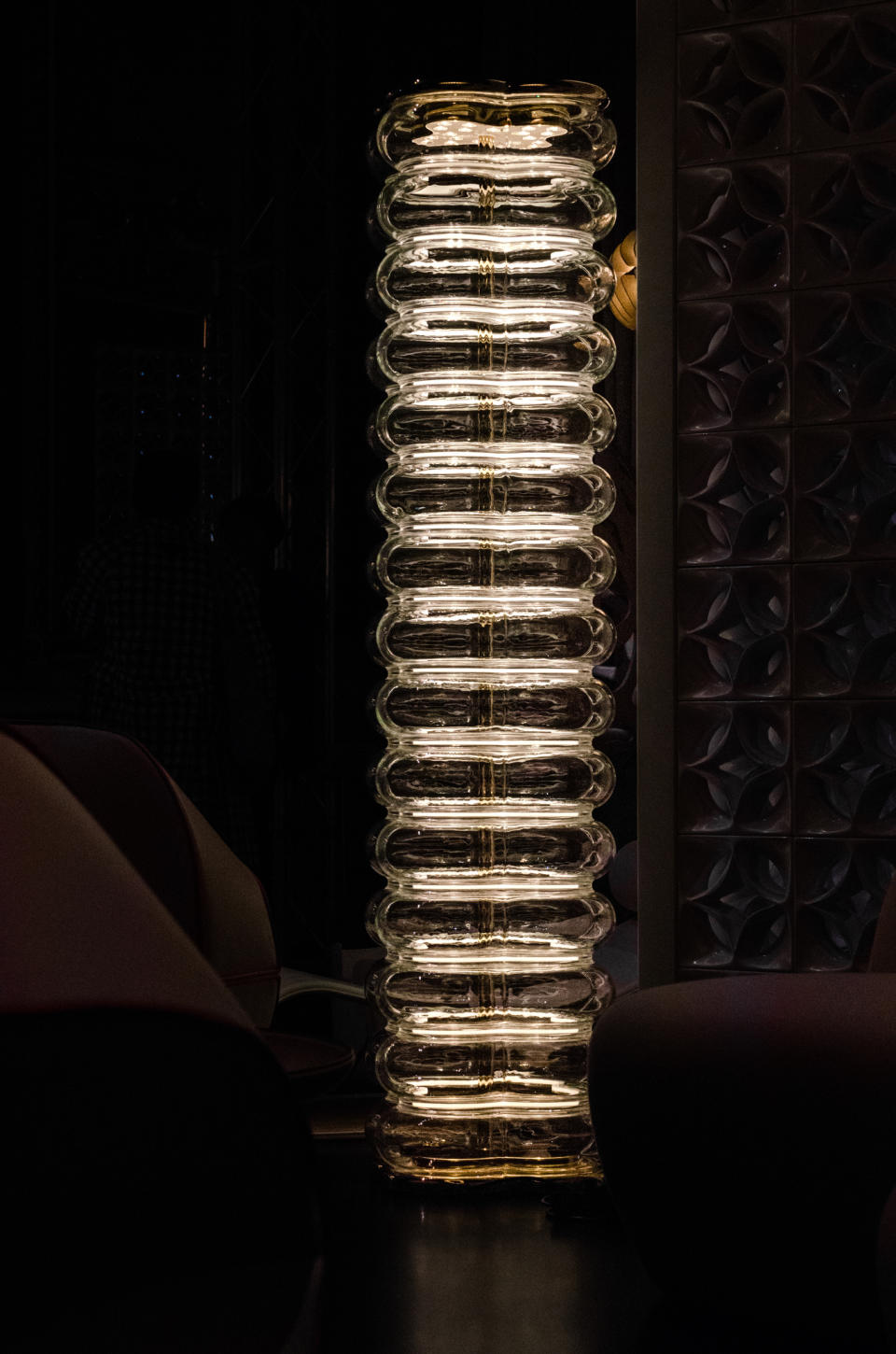
“We liked the idea that a house doesn’t develop from walls but from a center, like sort of what fire was in the primitive era. You start to build and imagine a home, a city, from there,” she said. In sync with Campana’s spiritual approach to design, the duo also wanted to bank on lighting to metaphorically “remind us that our center is in our home but also in our first habitat: our body.”
“We wanted to be a message of light, because we imagine a bright, positive future,” said Biagetti.
“Every object is a tool to tell a story, in some way. The stories around objects are much more interesting, because our houses are full of objects; we have everything, what are we missing? We miss those items that actually trigger our psychology, our dreams and tell much more about us, even something we don’t know yet.”
Her partner considers the design as “the continuous curiosity of trying to understand how anything around you, any object can also be a tool for interacting with others or a political one for sending messages also using irony… So we can say that it’s a perfect balance, which is embedded in the history of Italian design: a balance between people who create and people who make, with the joint goal of creating excellence. Without this there would be no design.”
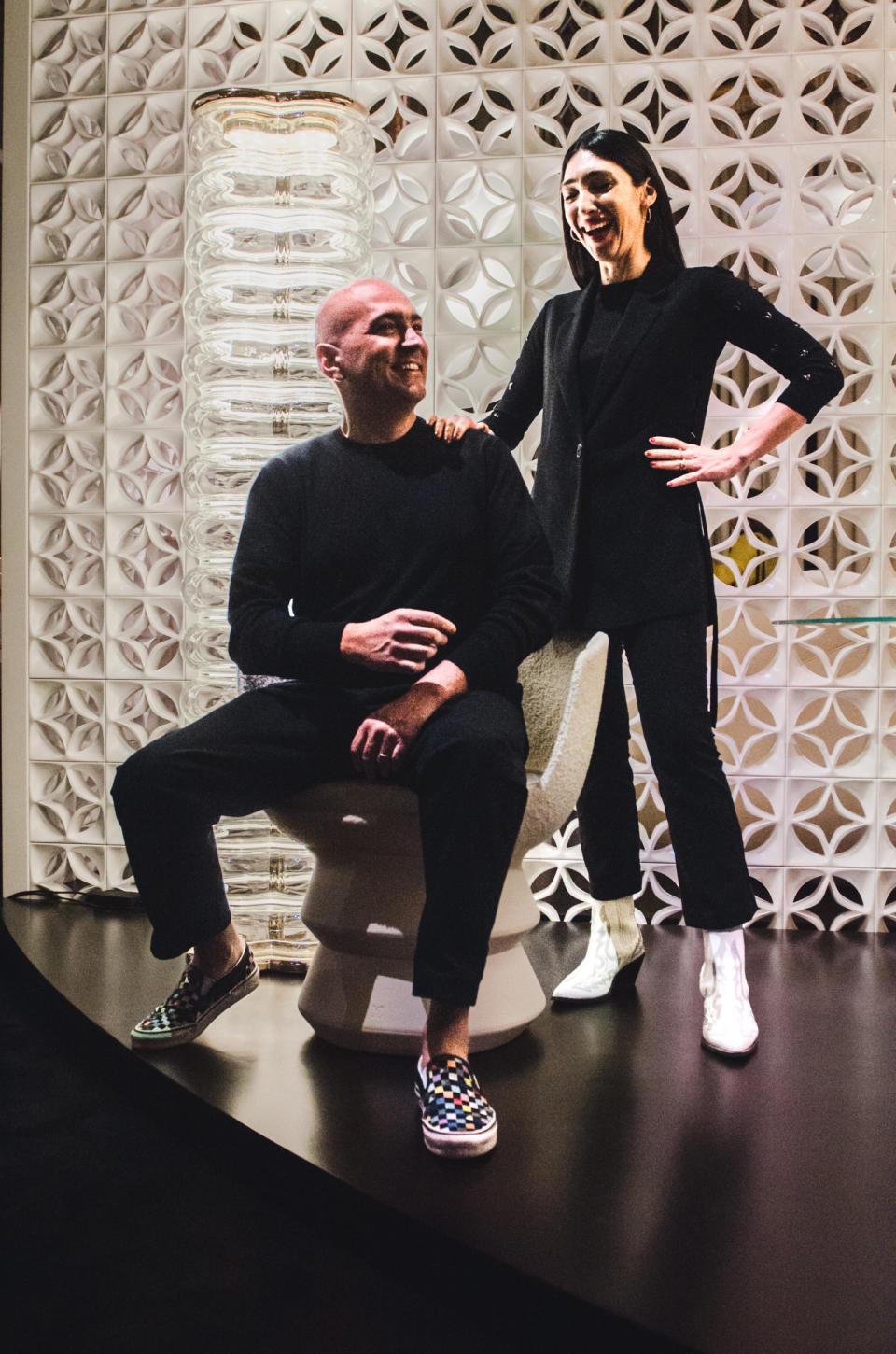
“Something that clicks” was the definition offered by Israeli designers Shay Alkalay and Yael Mer of London-based Raw Edges. “When you put together shapes and function and you create something that is inspiring: I know it’s very broad, but I think design is all about this. Everything needs to kind of click,” said Alkalay.
For their fifth design for Objets Nomades, Raw Edges developed the “Binda” armchairs and a sofa in velvet and glossy leather, standing out for their sculptural appearance, inspired by the curved lines of a tennis ball. The duo started from a study on geometry casually realized through a small, paper prototype before a pitch was even made to Louis Vuitton.
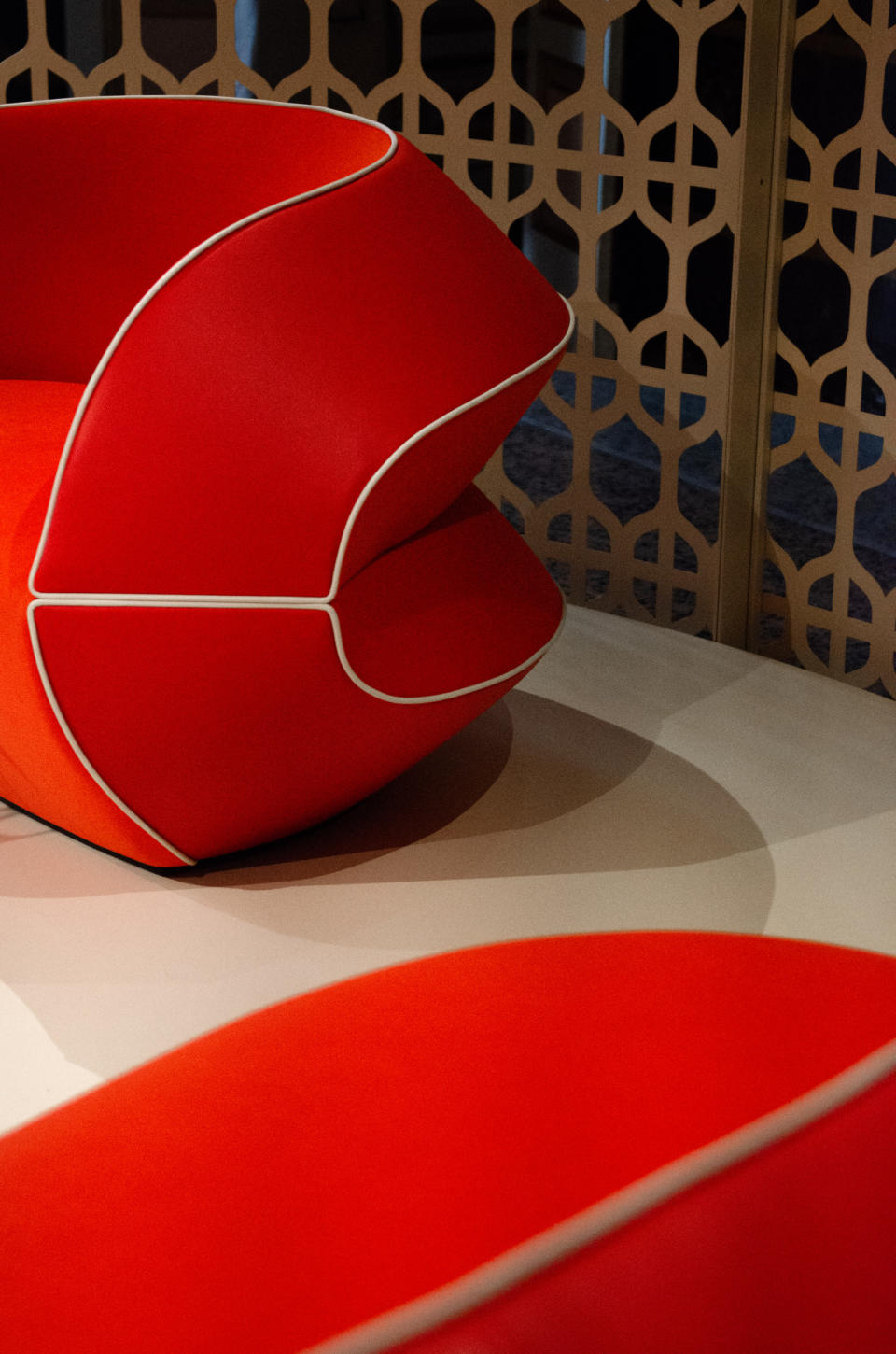
“We don’t have a passion in tennis, we have it in geometry,” said Mer, underscoring that the duo was intrigued by how flat materials could be turned into volumes. The challenges in actually developing the furniture resided into bringing the concept and paper model into reality, so using different materials, real size and function like comfort “while keeping the geometry there and not losing the charm.”
“For us it is always really important to come up with something that is new. This is our quest, it’s our mission… That feeling of ‘I came up with something’: this is design for me,” added Mer.
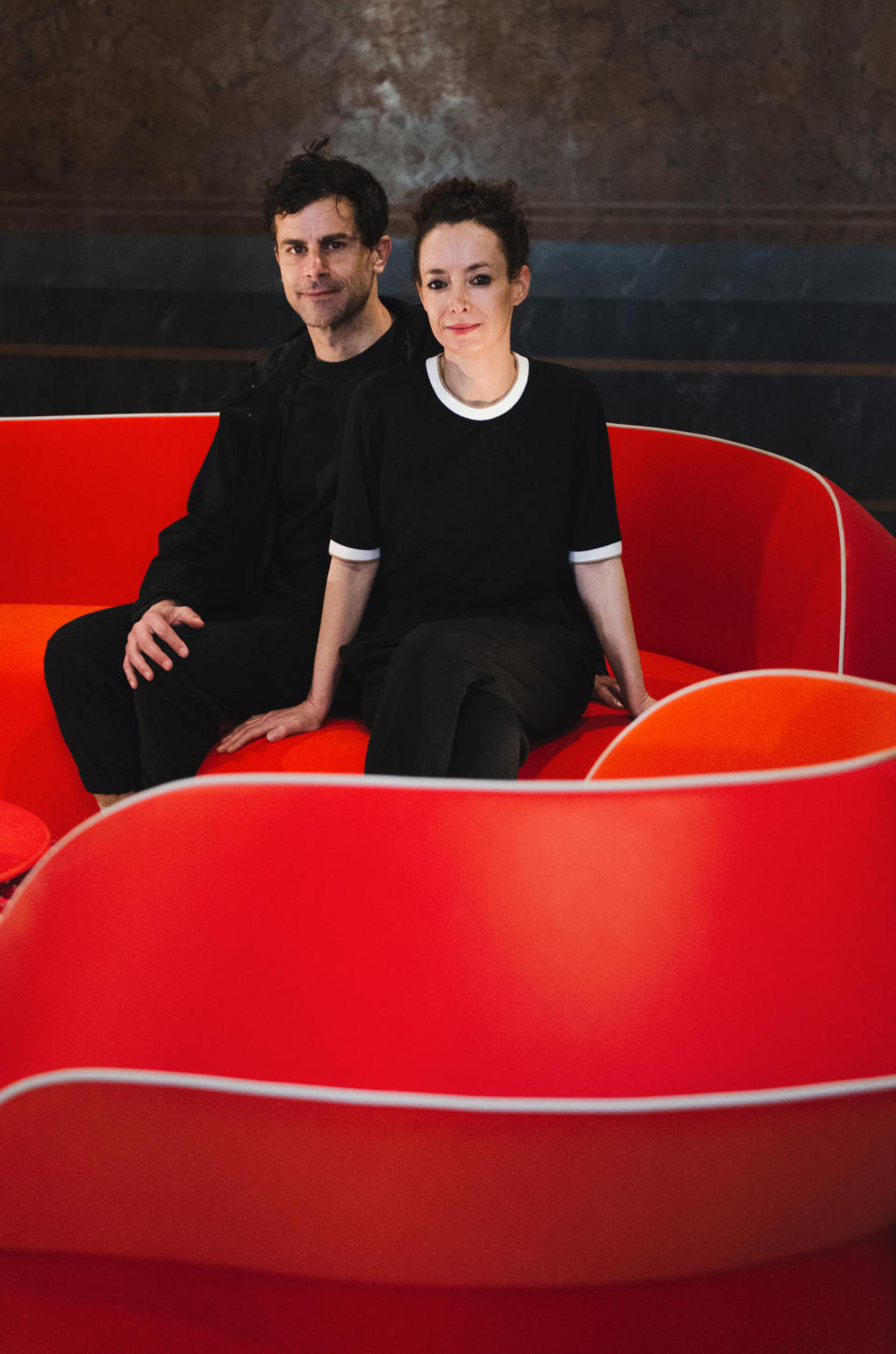
“For everyone it is so personal, but for us design is giving shape to a research and a story,” echoed Daniele Bortotto, who founded the Treviso, Italy-based Zanellato/Bortotto studio with Giorgia Zanellato 10 years ago.
The duo was first called upon by Louis Vuitton to interpret the nomadic concept in 2018. First, they developed a fascination for yurt tents and weaving techniques, starting to experiment with these with leather in the Mandala and Lanterne designs. This year, they designed Basket Table, available in two sizes and made of three leather bands woven into a honeycomb metal base, which was capped by a glazed stone top.
Finding the right balance across the different materials was among the key challenges of the project, according to Zanellato, who underscored that another layer of complexity is given by Louis Vuitton’s quest for perfection. “Their attention to detail is unique and very exciting for us… The quality and know-how is top notch and enable you to experiment to the extreme, differently from other companies.”
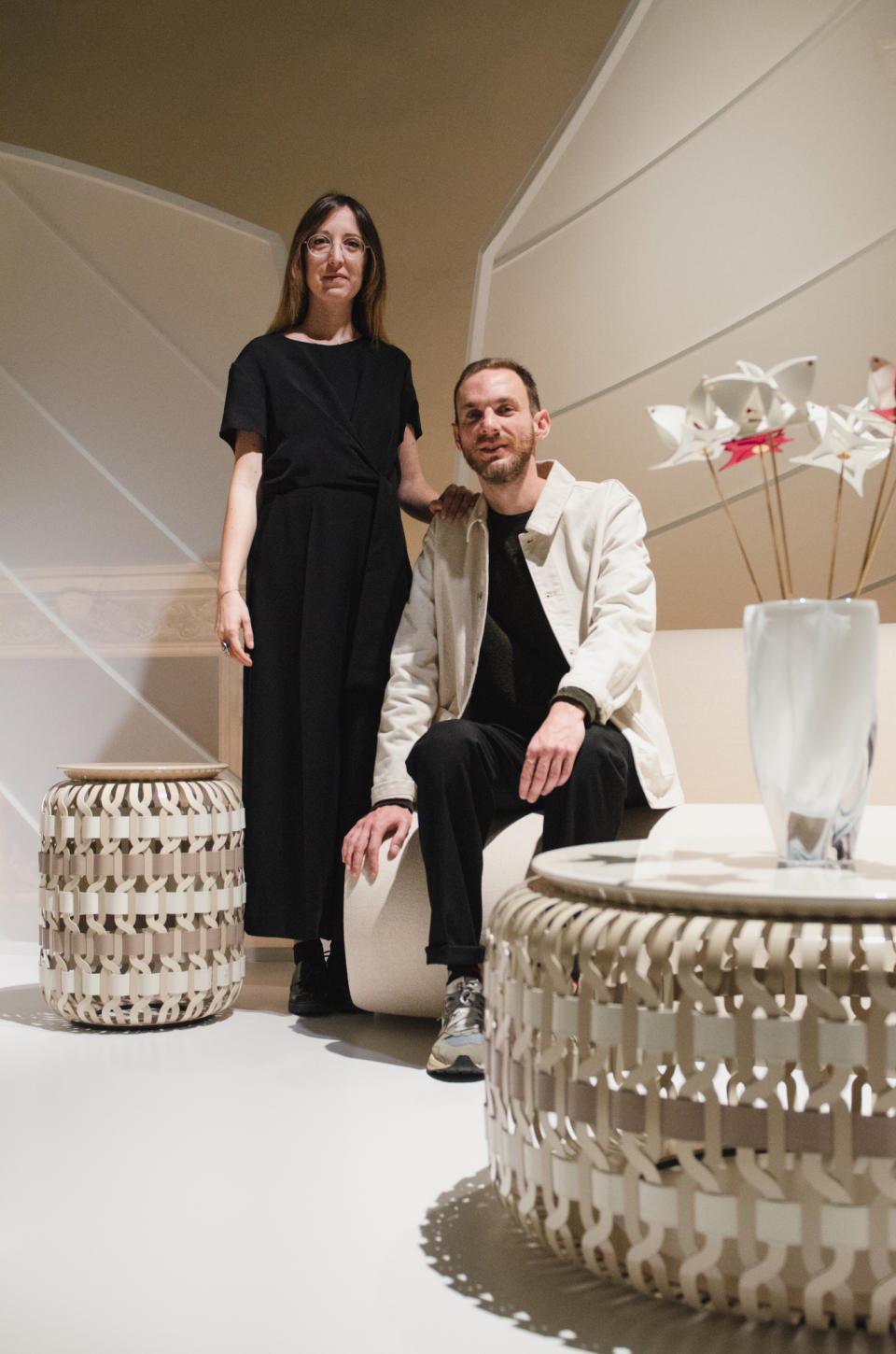
Beyond the collaboration with the French luxury brand, designers referred to disparate sources of inspiration in their work, mentioning specific peers and collections from the past.
For Campana, Italian-born Brazilian Modernist architect Lina Bo Bardi was key in his professional journey, as he said he “always tried to see things through her eyes when I first started.” Incidentally, Campana moved to design from a career as a lawyer, after having “learned to see things at 20,” including Bo Bardi’s projects in Brazil.
As for his own journey, Campana is working on a project to be unveiled next year to mark the 40th anniversary of Studio Campana: opening a botanical park in his hometown in Brotas that merges art, design, architecture and nature. Campana and his brother inherited the land and planted 20,000 native trees in past years with the intention to turn the space into a destination for the local community and to educate younger generations about biodiversity and respecting the environment.
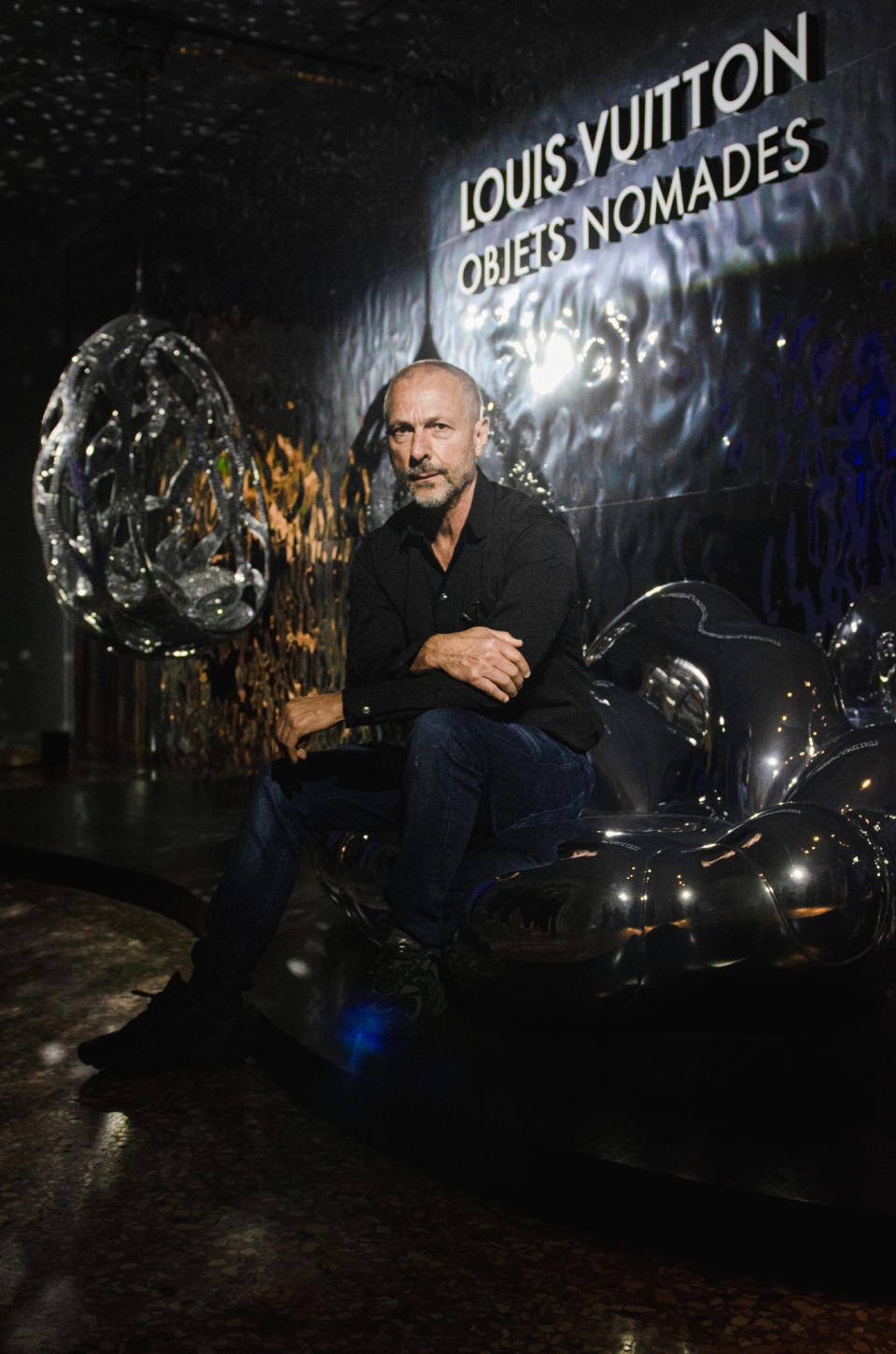
Atelier Biagetti also looked at Italian designers as a source of inspiration, naming Ettore Sottsass, Alessandro Mendini and Andrea Branzi, among others. “And of course Gaetano Pesce, who today everybody seems to love much more than in the past but for us has always been an incredible legend. He has done amazing, unusual objects.”
The duo said they had an affinity for radical design and for the term itself, underscoring the importance of it in this particular era. “We come from years in which this industry phagocytized everything and hasn’t allowed designers to express themselves due to marketing directors who have tried to adopt their intentions to trivialize people’s homes,” said Biagetti.
“There are a lot of heroes in the world, if you want to listen and learn from those heroes,” added Wanders. “There are also some superheroes, some people that have changed not only an object, but that they’ve changed our world, like Charles Eames and Philippe Starck. Philippe Starck on his own changed the world multiple times. I think he really invented quite a few things and he’s an all-time hero for me. I hope to be in that list one day,” concluded Wanders.
Best of WWD

